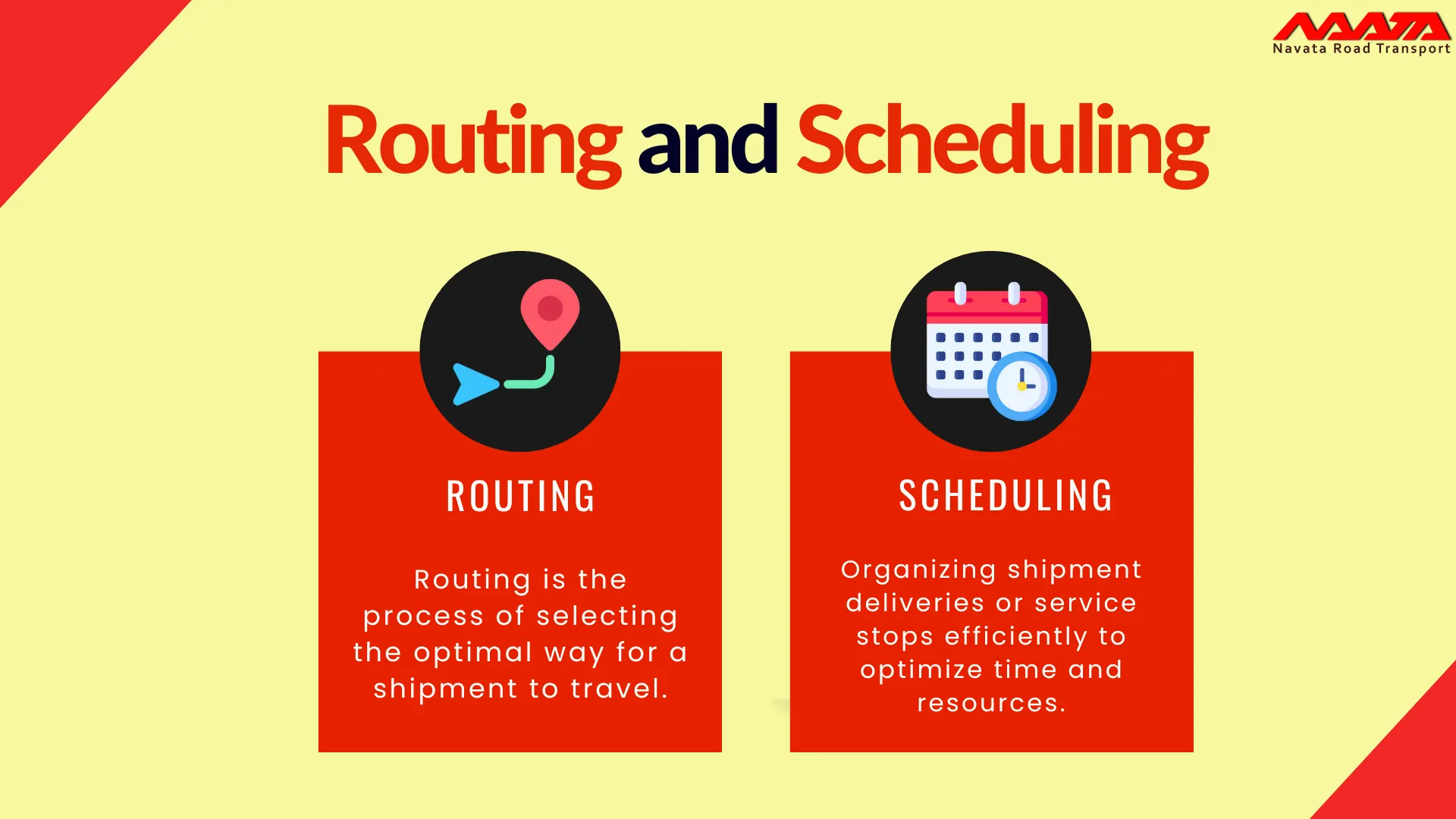Sign up for exclusive offers and updates
Let Us Help You Find a Solution That Meets Your Needs.
In transportation, route planning is figuring out the best and most economical ways for cars or cargo to get from one place to another. This procedure is essential for improving overall network efficiency, cutting expenses, shortening travel times, and optimizing logistics.
However, route planning is much more than merely calculating the quickest path. Let’s examine the many advantages this unseen behemoth provides in the convoluted transportation environment of today while delving further into its sophisticated inner workings.
Route planning is crucial in the transportation sector for a variety of reasons. Route planning, first and foremost, can contribute to increased customer satisfaction by guaranteeing on-time delivery. Second, it contributes to ensuring the most effective delivery of goods and services. Finally, by using workers more effectively and consuming less fuel, it can help reduce operating expenses.
Route optimization techniques are used to optimize the routing process between the origin and destination in order to achieve all of these. To provide the best route feasible, a routing algorithm takes into account a plethora of data elements, including driver availability, vehicle requirements, time window limits, route parameters, and much more.

Two crucial facets of logistics in the transportation industry are scheduling and routing. To put it briefly, scheduling entails setting up a timeline for when shipments should be delivered, whereas routing is the act of figuring out the optimal path for a cargo to take. A multitude of criteria are considered in both scheduling and routing, such as driver availability, traffic conditions, and delivery deadlines.
Ensuring that stops are made efficiently and on schedule is the ultimate aim of scheduling and routing. This could sometimes entail taking a longer route to avoid dense traffic. In other situations, it can entail shipping a package ahead of schedule to satisfy a customer’s deadline. Whatever the situation, the goal is always to reduce disturbances and maximize efficiency.
Routing is the process of selecting the optimal way for a shipment to travel. When routing a shipment, numerous aspects must be considered, such as delivery deadlines, traffic conditions, driver availability, and so on. Routing is designed to ensure that shipments arrive on schedule and at a reasonable cost.
There are numerous approaches to shipping routing. Using truck route planner software, which considers all pertinent parameters and offers a recommended route, is the most popular approach. The optimal path for a shipment can, however, also be chosen by hand. You can accomplish this by consulting maps, monitoring traffic reports, and talking to local drivers.
Making a schedule for when shipments should be delivered or the order in which field service personnel should make their stops is known as scheduling. This includes scheduling several routes and locations and accounting for various factors such as driver availability, traffic patterns, and delivery deadlines. Making sure that stops are done efficiently and on schedule is the aim of scheduling.
The scheduling of a shipment can be done in a variety of ways. Although a calendar for shipments can be made manually, the most popular approach is to employ route planning and optimization software, which considers all pertinent variables and produces a suggested timetable, even for routes that take several days to finish.
If your delivery requirements are complex or high priority, then optimized route planning is essential. The timely delivery of your products to their destination is just one advantage of this calculated method. It not only guarantees prompt delivery but also lessens driver stress, lowers the chance of accidents, maximizes resource utilization, increases customer satisfaction, and boosts productivity. Here are some additional noteworthy advantages of route optimization to think about.
Careful route planning cuts down on driving time, which lowers fuel consumption and car maintenance expenses. Why subject your cars to needless wear and tear? When you have well-planned routes, you can use cars only when absolutely necessary. By doing this, you’ll lower your ongoing expenses and ultimately increase the longevity of your cars. By lowering driver tension, you’ll also lower the chance of costly accidents. Continue reading to find out how route design can reduce the number of incidents.
Drivers may experience fatigue, anxiety, or worry when their routes are unclear or erroneous. Your drivers may experience emotional and mental strain if your route design does not take into consideration traffic, road construction, or other stressful barriers.
Drivers in distress are more likely to be involved in collisions. They put your resources at danger of damage and pose a serious safety hazard. Accidents may result in property damage, injuries to other drivers, and growing expenses in addition to causing legal issues. Planning your trip well can help you stay out of these scenarios. Clear, well-planned routes reduce the likelihood of drivers becoming irritated or tired, which lowers the risk of an accident.
You risk losing clients or partners if your delivery schedule is being slowed down by ineffective routes. Delivery times will be accelerated by taking the most efficient routes, which will increase client satisfaction. Providing timely delivery will help you stand out in your industry, draw in new business, and win over existing customers. Meeting deadlines with precision will improve the reputation of your business.
Planning your routes effectively will increase your output as a whole. You may manage driver shifts, reduce backtracking on the road, and make sure deliveries use the least amount of time and materials possible. Increased delivery productivity allows you to concentrate more of your efforts and resources on other projects, which will aid in your company’s growth and development.
A lot of companies are using delivery and field service logistics software to streamline operations and increase productivity. The following are some of the main advantages of using software:
Planning: In just a few minutes, automatically create and optimize routes while taking into account all required inputs.
Visibility : Being able to manage your drivers in real time means knowing exactly where they are and the difficulties they are facing.
Efficient output: To make more stops and meet deadlines, get the most out of your drivers and vehicles.
clientele encounter: More information at your disposal allows you to retain the client.

Route planning organizes the effective flow of people and products. It’s a sophisticated process that guarantees on-time delivery, cost savings, and customer happiness; it’s not just about choosing the quickest route. Businesses can decrease fuel consumption, lower accident rates, and increase productivity by optimizing routes and schedules. Additionally, route planning is made even more effective with the use of cutting-edge software, which maximizes resource use and offers real-time visibility. Optimal route planning is not only advantageous in today’s intricate logistics environment, but it is also necessary for businesses to prosper and satisfy their clientele.
Thanks For Reading: The Important Role of Route Planning In Transportation
Powered By 360Presence
Let Us Help You Find a Solution That Meets Your Needs.
Navata Road Transport, a road logistics service provider, established in the year 1982, now occupies a place of pride among the leading Road Transport Organizations in India. Navata is spread across a network of 668 branches in Andhra Pradesh, Telangana, Karnataka, Tamil Nadu, Odisha, Pondicherry, Maharashtra, Gujarat and Madhya Pradesh with ambitious further expansion plans pan India.
Navata Road Transport
D.NO.18-667, BOSE BUILDINGS,
KANURU, VIJAYAWADA – 520007
ANDHRA PRADESH.